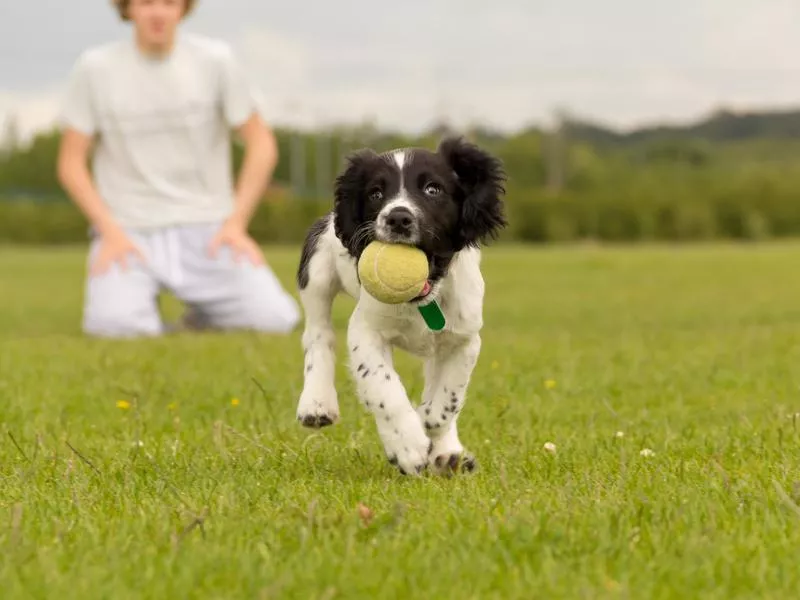Whether you’re a new pup parent or a seasoned dog owner, you’ve likely heard about the benefits of training your dog — outside of the obvious ability to shake your dog’s paw.
It can increase your ease with leaving them alone, as they’ll know the behaviors you approve of and the behaviors that will get them in trouble (i.e., chewing up your shoes while waiting for your return). Plus, you’ll bond even more with your dog by training it regularly. Your pup will learn to listen to you, and it will become a habit, so you can learn new dog tricks even quicker.
But don’t let the prospect of teaching your dog cool tricks overwhelm or stress you out. There are lots of ways you can break this seemingly major task into delicious bite-sized morsels you can sink your, well, canines into.
Here are a handful of simple tips on how to teach your dog tricks that will make training your dog go more smoothly.
Be Patient

Patience is key when you first begin training your dog. Getty Images
Despite the fact that they may look at you with pleading, doe eyes, it’s important to remember that training your dog will take some time. Don’t give in immediately to their begging or let disruptive behavior continue for too long simply because you’re frustrated or think they can’t learn.
Dogs have been human companions for centuries. They know that part of their job is to be your buddy who makes you happy. And if the way you’ll be happiest is that they learn to listen more intensely and learn what it is you’re attempting to communicate, it won’t take long before you’ll have a world-class floppy-eared student on your hands.
Also, remember that they’re not going to always understand everything on their first try. Keep your patience for them high so neither one of you gets frustrated and associates training with anger. Take whatever accomplishments you can get and stay the course — your pup will undoubtedly respond sooner rather than later.
Spice It Up

Don’t forget to vary your dog-training routine. Getty Images
Variety is the spice of life, even for dogs. Though it’s important to make sure they’re up-to-date on their basics, it’s also important that you don’t get in an expected routine.
When I was growing up, we taught our dog to “sit-down-stay-shake-rollover-and-speak” all at once. We thought it was an easy way to get him to efficiently do all those things at once. Until, of course, when he started treating it like a quick little dance that he would do all at once the second he saw a treat.
Teaching your dog that they have to stay on their toes and listen carefully to your commands will keep them active participants of the training session. And if they’re active, they’re much more excited and receptive to everything you’re teaching.
Make It Social

Your dog can learn from other dogs if you bring them and their owners into the mix. Getty Images
As you begin to increase your bond and trust with your dog, see if you can get a fellow dog owner to join you for a joint training session. This could be especially beneficial if the dog is well-behaved and well-trained.
Your dog, especially if it’s younger, will pick up on the cues that their counterpart is giving them, which can increase their retention and understanding.
Plus, it will teach them that they must listen to anyone who wants to train them (not just you), and that they need to concentrate on their specific cues if they want a reward.